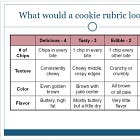#6: Promoting Belonging
Fostering a strong sense of belonging can transform student engagement, boost academic success, and create a thriving campus community.
Welcome to the summer 2024 “Top 10 Essential Practices” series for new faculty! Catch up with the series introduction here and #10: Understand Your Learners., #9: Clear Learning Objectives , #8: Using Active Learning. #7: Providing Timely and Constructive Feedback.
When a students walks into our classroom for the first time, they might make very quick judgments about whether they feel a sense of being welcome, of fitting in, of being comfortable with their peers and with their instructors. Their sense of belonging refers to the feeling of being an integral part of a community, group, or environment, where they perceive themselves as accepted, valued, and supported. It encompasses the emotional, cognitive, and social connections that bind individuals to others within a specific context, such as an educational institution, and influences their motivation, engagement, and overall well-being.1
Why is a sense of belonging important?
Academic Performance: When students feel that they belong, they are more likely to be engaged in their studies, participate in class, and seek help when needed. Students who feel they belong are more likely to persist through challenges, remain committed to their educational goals, and complete their degrees.
Identity and Self-Efficacy: Belonging encourages students to form social connections, which can provide support, resources, and a network that enhances their college experience. When students feel they belong, it reinforces their identity as capable learners and members of the academic community. This can boost their confidence and belief in their ability to succeed.
Mental Health and Well-being: A strong sense of belonging can reduce feelings of loneliness, anxiety, and depression. Students who feel connected to their peers, instructors, and the institution are more likely to experience positive mental health outcomes.
Put belonging in practice…
There are a lot of different ways to contribute to our students feeling like our classroom and our institution is a place where they belong. Here are a few simple things you could do:
Be welcoming.
Learn their names - I always have students write name tents on a folded piece of paper for the first couple weeks of the semester, and draw up a seating chart where I make little notes (purple glasses, long hair, goatee) to help me connect names to faces. I also ask students how they pronounce their name, and write a phonetic spelling on my roster if needed.
Go beyond names, and get to know your students through first-day/first-week community building activities, like fun, icebreakers.
Set a tone from day 1 that helps students see you as a person, not just a professor robot. Cookies never hurt, either.
Be Flexible. (But not too flexible).
Where you can, offer choices to students in how they complete course activities - let them post videos or text responses to discussion forums, ask them to choose 4 out of 6 possible tasks to complete - ideally within a set of choices that you’ve outlined/curated.
Consider how flexible deadlines can help students and you with managing the flow of work. For example, I sometimes offer students a submission window rather than a due date. This permits students who want to complete an assignment early to submit it early (and normalizes early submission as a reasonable choice rather than students worrying they’ll be penalized for “not working hard enough”) while spreading out the submissions over several days to a week, so I have more time for thoughtful grading and feedback.
Universal Design for Learning (UDL) prompts us to design courses where students have many ways of accessing and engaging with course content, and many ways to show mastery of the learning outcomes. Implementing UDL principles doesn’t mean you must overhaul your entire course tomorrow, but rather focus on finding small ways to add choice for students.
Learn more about UDL from Reach Everyone, Teach Everyone: Universal Design for Learning in Higher Education (West Virginia University Press, 2018).
How do you contribute to your students feeling a sense of belonging? Please share in the comments!
Didn’t get the latest AI + Teaching post?
When I created the new section, I made it an “opt-in” for current subscribers, rather than “opt-out.” This means that you need to elect to receive posts from that section - instructions for how to do that are found here:
© 2024 Tips for Teaching Professors
For more about the origins of the term, read: Strayhorn, T. L. (2012). College Students' Sense of Belonging: A Key to Educational Success for All Students. Routledge.









